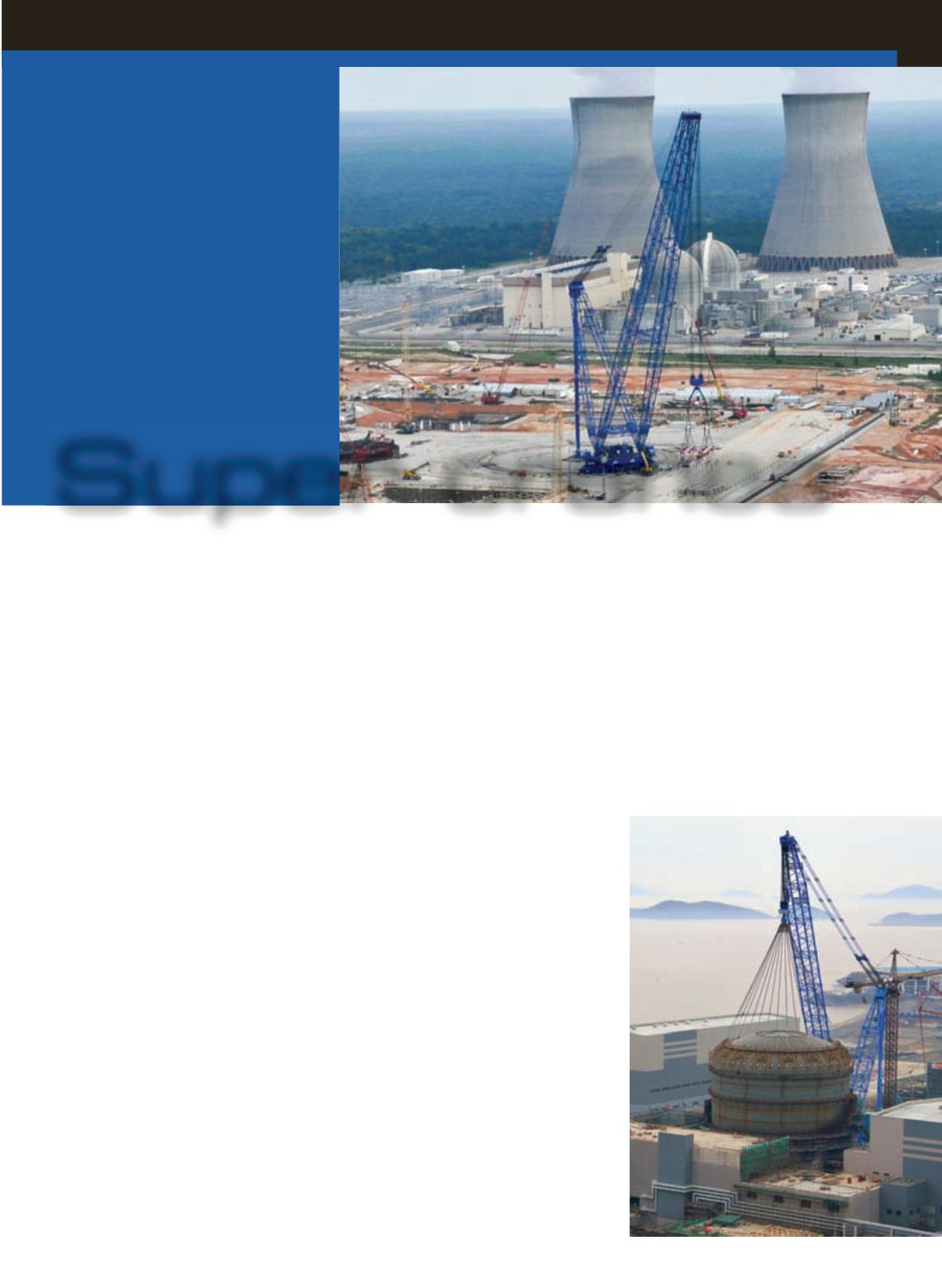
27
SEPTEMBER 2013
ACT
I
n the crane industry, super heavy lift
cranes get a lot of attention, as well
they should. While your average crane
owner does not own a crane that can lift
in excess of 1,000 tons, much less 7,500
tons, the idea of a crane lifting this much
weight is awe inspiring.
Interestingly, the market for cranes in
this sector – those that can lift from 1,000
to 7,500 tons – is robust, with several
companies around the world producing
cranes that fall in the extra heavy lift
category. The attributes of these cranes
differ, with the manufacturers employing
varying designs and technologies to allow
these cranes to lift such huge payloads.
For the most part, demand for these
cranes is project driven, with nuclear
power plants, refineries and other
industrial applications comprising the
market. Many companies in this market
say their calendars are filled with work
stretching deep into 2014.
The Lampson International Transi-Lift
revolutionized the use of super heavy lift
cranes in the construction industry by
introducing the “over the top” method of
lifting. Transi-Lifts are one of the most
versatile and globally recognized cranes on
the market, says Kate Lampson, marketing
director.
“We are seeing a demand for heavy lift
cranes in the energy sector for new power
plant construction and refinery work,” says
Lampson. “We are also seeing a demand in
commercial construction.”
The Lampson Transi-Lift ranges
in capacity from 350 to 3,000 tons.
The Transi-Lift System is a patented
configuration that combines the heavy
lifting capacities of stiff leg derricks and
ring-mounted lift equipment with the
mobility of a conventional crawler crane.
“Easily adaptable to the lift requirements
of today’s heavy construction industry,
all Transi-Lift models boast precise
maneuverability, adjustable stinger length,
and multiple boom/jib combinations,”
Lampson says. “The Transi-Lift has the
ability to make multiple lifts on a jobsite
without having to disassemble.”
Lampson International has a new model
in production, the Transi-Lift LTL-3000.
It will feature joy stick controls in the cab,
hydraulic hoisting capabilities, a newly
designed enclosed engine compartment,
a 3,000-ton front crawler giving the crane
33 percent larger crawler capacity, a larger
boom cross section and an increase from 1
½ inch wire rope to 2-inch wire rope.
Project driven
Greg Augustine, national sales manager,
crawler cranes, Liebherr Cranes, Inc.,
says demand for super heavy lift cranes is
project driven.
“We are seeing an increasing interest
in cranes of this class; however actual
purchase is often dependent on a
successful project bid,” says Augustine.
“The sting of the last market downturn
is unfortunately still fresh in everyone’s
mind. Cranes in this class are a very
significant investment for any company,
even the very large companies that
typically own and operate these machines.
D.Ann Shiffler
reports
that the market for super
heavy lift cranes exceeds
expectations.
Despite the general uneasiness of this
market, we are very fortunate at Liebherr
to have been able to supply over 30
machines in this class globally.”
Liebherr’s largest heavy lifter is the LR
13000, a 3,300-ton capacity crawler. The
LR 13000 recently completed its inaugural
project at a petroleum refinery in Indiana.
Also from Liebherr is the LR 11360,
introduced in 2006, with a base capacity
of 1,488 tons. Both the LR 11360 and the
LR 13000 are equipped with derricks,
and ballast trays or wagons, in order to
maximize their lift capacities.
Super cranes
Bigge Crane & Rigging has
its two 7,500-ton capacity
AFRD units working in
Georgia and South Carolina.
The Lampson Transi-
Lift has been a
mainstay in the super
heavy lift market for
more than 30 years.
Lampson International
has a new Transi-Lift
model in production,
the Transi-Lift LTL-
3000.
SUPER CRANES
PRODUCT FOCUS


